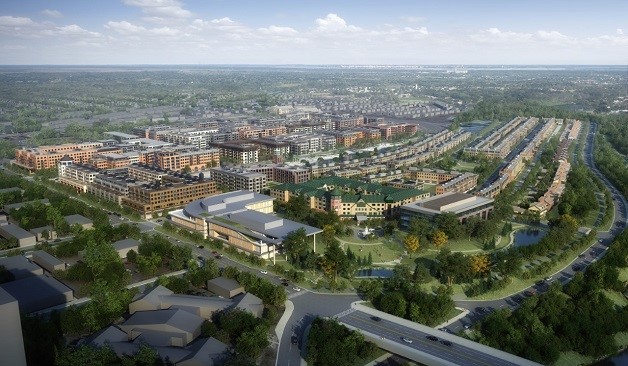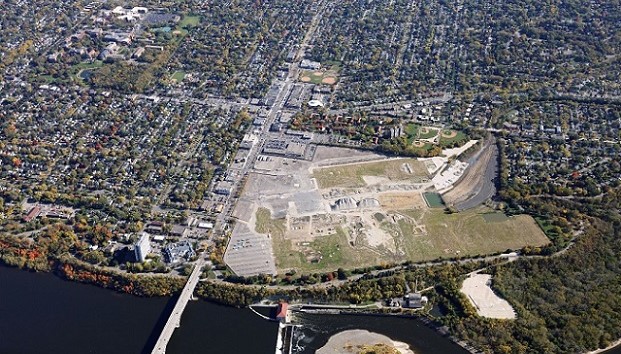 Ryan Cos. vision for the former Ford site in St. Paul calls for mid-rise buildings and a lot of public and open spaces that will help it blend into the surrounding neighborhood.
Ryan Cos. vision for the former Ford site in St. Paul calls for mid-rise buildings and a lot of public and open spaces that will help it blend into the surrounding neighborhood.
ST. PAUL—Ryan Cos. unveiled their concept for the City of St. Paul's Ford Site Master Plan at a middle school in the Highland Park neighborhood last week. The proposed mixed-use community will replace the neighborhood's former Ford manufacturing site with a wide variety of housing, including market-rate apartments, condos, rowhomes, seniors' housing, along with some retail and office space. It will be the culmination of years of effort, cleanup and planning by the city and state, but Ryan officials also wanted to get approval from local residents.
“The sheer scale of this is unique,” Tony Barranco, senior vice president of development at Ryan Cos., tells GlobeSt.com. “There haven't been many mixed-use communities in St. Paul, and there haven't been any created in a neighborhood. This is going to be a 10- to 12-year project and we want to make sure it's woven into the community.”
Ford awarded Ryan the development rights to the prominent 122-acre site in June, but the city council and mayor were clear that any proposal had to keep it as open and green as possible. That's why Ryan plans to create 50 acres of open space, including the preservation of existing Little League baseball fields, and line the western border along the Mississippi River with single-family homes rather than apartment towers.
 The site has been unused for years, and the Ford Co. recently completed an environmental cleanup.
The site has been unused for years, and the Ford Co. recently completed an environmental cleanup.“We have tailored the site so the densest development is not along Mississippi River Boulevard,” Barranco says. Furthermore, the plan also calls for a number of east-west paths, both for biking and walking, that will connect the entire site to the river.
In all, the new $1 billion community will have about 3,800 new housing units, along with about 265,000 square feet of office and 150,000 of retail.
And neighborhood residents won't see their homes overshadowed by massive apartment towers. The city rezoned the area so Ryan could develop buildings with up to ten stories, but the company plans to go no higher than six. “We don't need to go 10 stories for the project to work,” Barranco says. In fact, these lower structures will keep construction costs down and allow for cheaper rents, which answers another concern raised by Highland Park leaders.
The diverse array of housing types was another quality sought by city officials. But Barranco says this also does not present unsurmountable challenges. “There is a big demand for senior housing in this market,” along with demand for condos and workforce-type housing. “We don't think we're going to give up anything by delivering these to the project. The goals of the city match ours and what we think the market will support.”
The company plans to start infrastructure work next fall, but the time for community engagement is far from over. “We will have dozens of additional meetings over time,” Barranco says.
© Touchpoint Markets, All Rights Reserved. Request academic re-use from www.copyright.com. All other uses, submit a request to [email protected]. For more inforrmation visit Asset & Logo Licensing.







